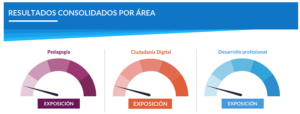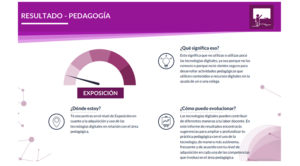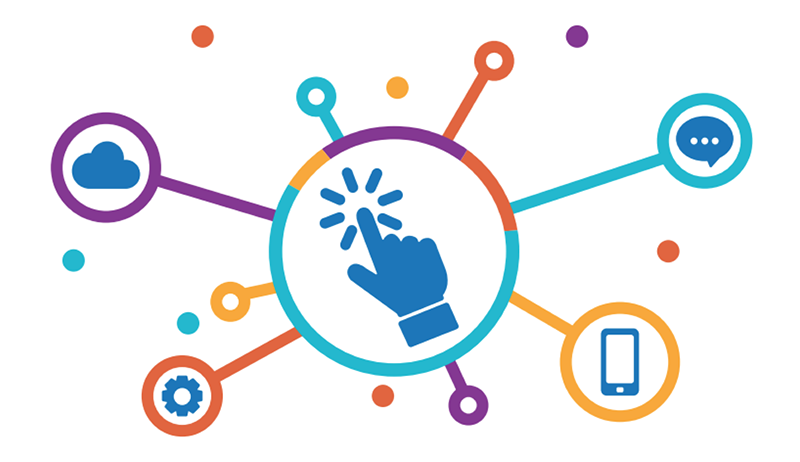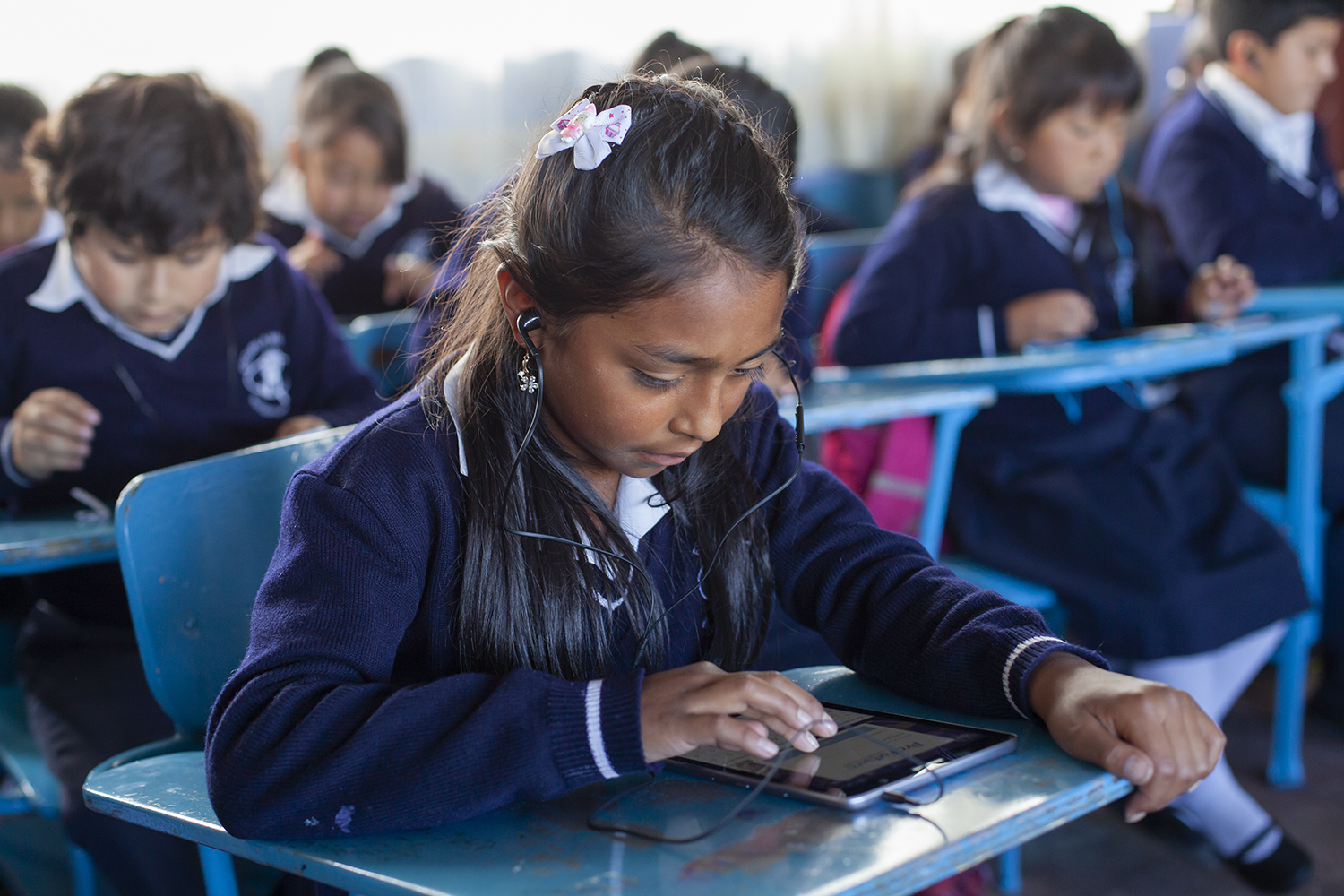The assessment of teachers’ digital skills is a key issue in developing teachers who are able to offer their students a quality education that meets the challenges of the 21st century. Pero, what is a digitally competent teacher? What must they know how to do? And above all, how do we help them develop their digital skills?
Providing teachers with tools to know what point they are at in their journey might be a logical first step. Equipping them with tools that enable them to identify their own competences, what they know and don’t know about technology and showing them how they can evolve is vital for their digital competence and professional development.
And how can we create an instrument that stimulates the progressive development and upgrading of teachers within the context of educational technology? To answer this question, the Self-Assessment of Digital Skills of Teachers Tool was developed by the Brazilian Centre of Innovation for Education (CIEB)and adopted and adapted by the ProFuturo Foundation. The Tool, which was developed to be a professional development inducer, has a twofold objective: to promote teachers’ reflection on their own knowledge and use of digital technologies in their daily practice, and to offer them guidance on how to develop these competences. For this reason, rather than offering a closed diagnosis, it has been conceived as the beginning of a path towards professional growth.
The Tool, which was developed to be a professional development inducer, has a twofold objective: to promote teachers’ reflection on their own knowledge and use of digital technologies in their daily practice, and to offer them guidance on how to develop these competences. For this reason, rather than offering a closed diagnosis, it has been conceived as the beginning of a path towards professional growth.
To meet this dual objective, the self-assessment is structured in two fundamental stages: a questionnaire, which identifies the level of digital skill of the person who carries it out, and a final report, which, based on the results obtained in the questionnaire, provides teachers with guidelines for their professional development and also makes them the protagonists of this development.
The questionnaire consists of 23 questions distributed in three areas that assess 12 competences in total, four for each area.

The area of pedagogy evaluates components such as the integration of digital technologies into pedagogical practice assessment, the personalisation of learning and the curation and creation of digital resources; the area of digital citizenship assesses the responsible, safe and critical use of these technologies as well as their use to promote equity and inclusion;finally, the area of professional development assesses the use of technologies for self-development and training, for self-evaluation, for the exchange of ideas, practices and resources, and for communication with other educational agents and actors.

Example of self-assessment results by professional development area.
The results report shows the teacher profile in five levels of development for each area and competence: exposure (when there is no use of technologies in pedagogical practice or this use is only personal), familiarisation (when the teacher begins to know and use technologies in their activities), adaptation (when technologies are used periodically and can be integrated in the planning of pedagogical activities), integration (when the use of technologies is frequent in the planning of activities and in the interaction with students) and transformation (when the teacher uses technologies in an innovative way, shares with colleagues and carries out collaborative projects beyond the school). The report not only presents the outcome of the self-assessment, but also provides recommendations and suggestions for resources in those aspects that can be improved.

Example of a report of results.
Equipping teachers with tools that enable them to identify their own competences, what they know and don’t know about technology and show them how they can evolve, is vital to support their digital competence and professional development.
Why a self-assessment?
Self-assessment is only one of many ways of assessing competences. The benefits of self-assessment include the following:
- The effectiveness of training is maximised when teachers have a clear and objective understanding of their challenges and learning areas. This clarity enables development opportunities to be identified more accurately and effectively, both for individual teachers seeking to improve their skills and for education managers responsible for their development. As we will see below, with accurate information, managers can organise meaningful training that is adapted to the real needs of teachers.
- Empowerment and professional autonomy. By allowing professionals to self-assess, they are given the opportunity to foster their own growth and to seek training opportunities that suit their individual needs, thus giving their professional development a deeper meaning. This process requires teachers to be willing to reflect on their methods and to understand the central role they play in their professional development.
- The advantages of formative assessment. In the context of public school teacher assessment, often conducted by school administrators and government education agencies, and occasionally by their peers, these assessments tend to be predominantly summative. They often exclude the active participation of teachers and focus mainly on student learning outcomes. Self-assessment, by its very nature, is essentially formative.
The Self-Assessment of Digital Competencies Tool has a twofold objective: to encourage teachers to reflect on their own knowledge and use of digital technologies in their daily practice, and to provide guidance on how to develop these competences.
A great potential for public administrations
In the digital age, data has become an invaluable resource for improving public policy in education. Data collection and analysis allows for the identification of patterns, areas for improvement and successes in the education system. In this way, policy makers can make informed and more accurate decisions.
In this regard, the data collected by the Tool, suitably anonymised, can be very useful in guiding the planning of education authorities. This means promoting learning and skills development opportunities for teachers. In Brazil, for example, the CIEB used the data to create some technology training and experimentation spaces for teachers, where teachers, in pairs and groups, experiment with different technologies and, based on their experimentation, draw up lesson plans and do pedagogical planning on how they might use these technologies with their students. These centres have become a public policy of the Ministry of Education, which has decided to launch a policy of creating these technological experimentation laboratories.
We are not in an era of change, but in a change of era. We are at the beginning of a long and exciting journey. In social terms, we are facing a transformation that, like the printing press in its day, could represent an immense qualitative leap in the democratisation of access to quality education. However, the introduction of technology is not enough if it does not go hand in hand with social innovation and pedagogical innovation. And for that, teachers are fundamental. Collaborating in their digital competence development, with an assessment for metacognition, for the real improvement of their pedagogical and teaching expertise is fundamental for them to become leaders of a change that we must undertake as soon as possible.
References
ProFuturo Foundation. 2022. Digital Skills Self-Assessment Tool for Teachers. Technical Note.






